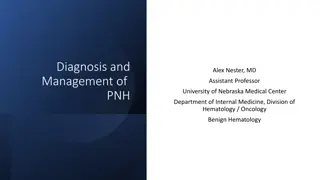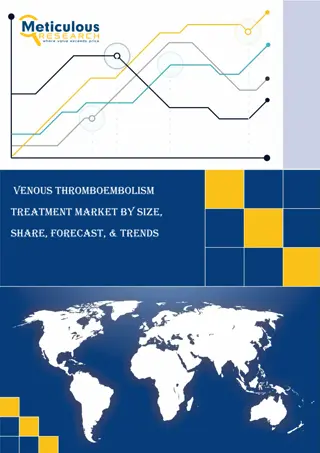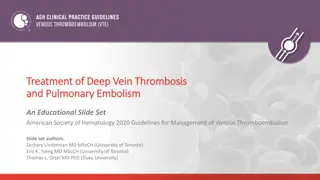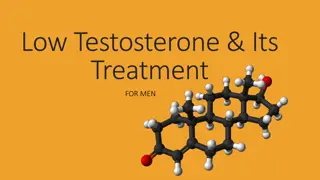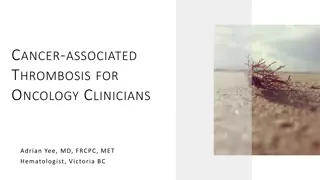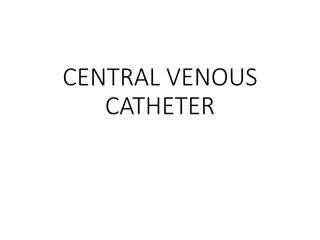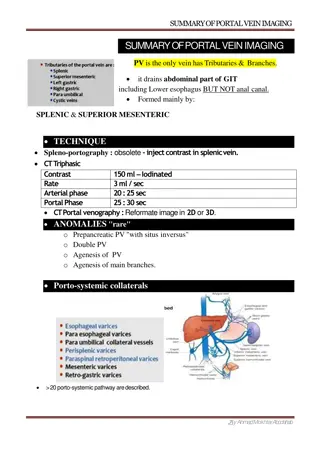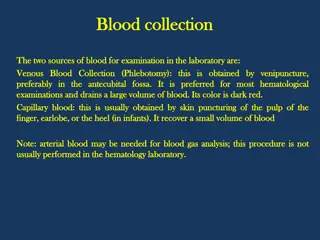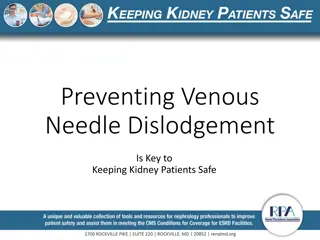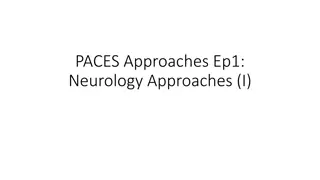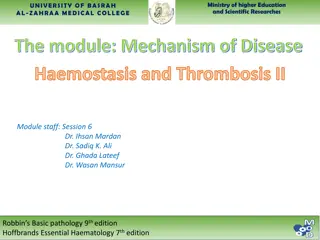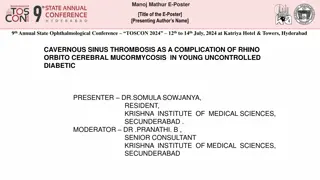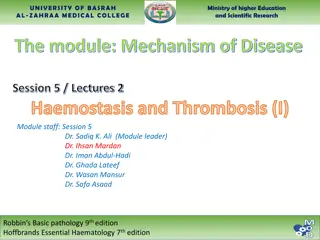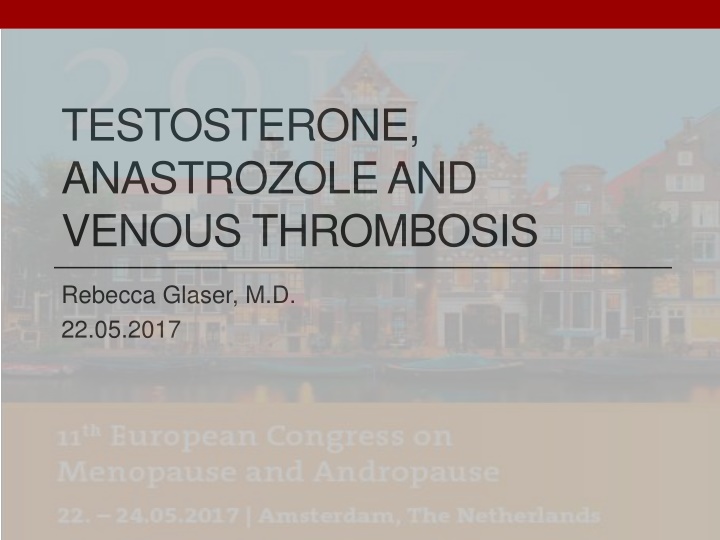
Testosterone, Anastrozole, and Venous Thrombosis Risks
Learn about the association between testosterone, anastrozole, and venous thrombosis, including the FDA warning on blood clot risks, effects of hormones on thrombosis, excess estrogen in aging males, and the impact of high estrogen and low testosterone levels on health. Explore the role of subcutaneous T implants in erythrocyte production and how increased aromatase activity can contribute to thrombosis risk.
Uploaded on | 0 Views
Download Presentation

Please find below an Image/Link to download the presentation.
The content on the website is provided AS IS for your information and personal use only. It may not be sold, licensed, or shared on other websites without obtaining consent from the author. If you encounter any issues during the download, it is possible that the publisher has removed the file from their server.
You are allowed to download the files provided on this website for personal or commercial use, subject to the condition that they are used lawfully. All files are the property of their respective owners.
The content on the website is provided AS IS for your information and personal use only. It may not be sold, licensed, or shared on other websites without obtaining consent from the author.
E N D
Presentation Transcript
TESTOSTERONE, ANASTROZOLE AND VENOUS THROMBOSIS Rebecca Glaser, M.D. 22.05.2017
BACKGROUND Testosterone, anastrozole and venous thrombosis
FDA warning [06/19/2014] The U.S. Food and Drug Administration (FDA) is requiring manufacturers to include a general warning in the drug labeling of all approved testosterone products about the risk of blood clots in the veins. Postmarket reports of venous blood clots unrelated to polycythemia Morgentaler, A., Miner, M. M., Caliber, M., Guay, A. T., Khera, M., and Traish, A. M. 2015. Testosterone therapy and cardiovascular risk: advances and controversies. Mayo Clinic Proceedings 90, 2, 224-251.
Hormones and thrombosis Physiological testosterone (T) replacement does not adversely affect blood coagulation status Pro-thrombotic effect of OCP, synthetic estrogens (Ethinyl estradiol, CEE), synthetic progestins (oral, SC) and possibly high levels of E2
Excess estrogen in the aging male Increased aromatase activity Increased fat mass, abdominal obesity Symptoms Development of breast tissue, gynecomastia Fluid retention Weight gain Anxiety, emotional disturbances Erectile dysfunction
High estrogen + low testosterone Increased risk of stroke Progression carotid artery intima thickening Coronary arteriosclerosis, MI Lower extremity peripheral artery disease Chronic inflammation Insulin resistance BPH Prostate cancer
Subcutaneous T implants Bypass the liver, no first pass effect Do not adversely affect clotting factors Increase erythrocyte production, secondary erythrocytosis Renal erythropoietin vs. other Does elevated blood count from a non-pathologic cause increase the risk of thrombosis? Is elevated Hct causal? High altitude-no TRT-unknown
Increased aromatase and thrombosis T is aromatized to estradiol (E2) Elevated estradiol is also associated with increased hematocrit in men Elevated estrogen can induce a hyper- coagulable state Increase coagulation factors Decrease anti-thrombin III
Testosterone, Thrombophilia, and Thrombosis 13 men, 1 woman diagnosed with thrombosis on TRT Increased risk (hypercoagulable/prothrombotic state) Factor V Lieden, Factor VIII, PAI-I gene or other E2 levels were elevated When exogenous T is aromatized to E2, and E2- induced thrombophilia is superimposed on thrombophilia hypofibrinolysis, thrombosis occurs Testosterone therapy should be stopped Glueck, C. J., Richardson-Royer, C., Schultz, R., Burger, T., Labitue, F., Riaz, M. K., Padda, J., Bowe, D., Goldenberg, N., and Wang, P. 2014. Testosterone, thrombophilia, and thrombosis. Clinical and Applied Thrombosis/Hemostasis. 20, 1, 22-30
METHODS Testosterone, anastrozole and venous thrombosis
March 2013-2017 344 male patients Prospective study Cardiac and prostate events SC T or T + Anastrozole (A) implants Aromatase inhibitor prescribed to prevent excess aromatization to E2
Laboratory Assessment T and E2 levels week 4 T and E2 levels end when symptoms returned (prior to re-implantation) Hemoglobin, hematocrit
Patient demographics Mean age at initial insert was 52.9 + 9.8 y Mean age at analysis was 57.7 + 10.5 y Mean baseline T 299.35 + 110.02 ng/dl Mean length of therapy at analysis 4.8 + 3.1 y, range 0.17- 11.6 y Height, weight, BMI
RESULTS Testosterone, anastrozole and venous thrombosis
Dosing (2013-17) 2200 Mean T dose 1878 + 263 mg 2000 339/344 (98.5%) of men treated with an AI, T + A implant 1800 T dose mg 1600 <30% in 2010 1400 Mean SC A dose was 14.8 + 3.9 mg with the majority of men receiving 16 mg A 1200 1000 2 x T 120 mg + A 8 mg implant 2009 2010 2011 2012 2013 2014 2015 2016 2017
Levels on therapy Mean T level at week 4 was 1235 + 313 ng/dl 25% T > 1500 ng/dl 65% T > 1100 ng/dl No ADE Mean E2 at week 4 was 16.45 + 11.73 pg/ml Mean T level when symptoms returned was 586 + 248 ng/dl Mean E2 end was 18.65 + 11.78 pg/ml
Erythrocyte count Mean Hb on therapy was 16.3 + 1.33 g/dl Mean Hct was 48.5 + 4.0 Elevated Hct correlated with T and E2 levels Donate blood for Hb > 18.5 or Hct > 55 Offer to reduce T dose
Secondary erythrocytosis 27 men on study (donated blood) Increased with higher T doses 2013-17 1/3 men with elevated rbc have/had a diagnosis of obstructive sleep apnea Secondary polycythemia (hypoxia) Do not see an increase in sleep apnea in men on SC T + A therapy
Results No episodes of venous thrombosis or thromboembolic events in 344 men treated with T + A implants in over 1600 person-years of therapy This compares favorably to an expected annual incidence of 149/100 000 (1.5/1000) for males age 55-59 y (57.7 y) Silverstein, M. D., Heit, J. A., Mohr, D. N., Petterson, T. M., O fallon, W. M., and Melton, L. J. 1998. Trends in the incidence of deep vein thrombosis and pulmonary embolism: a 25-year population-based study. Archives of internal medicine. 158, 6, 585-593.
DISCUSSION & CONCLUSION Testosterone, anastrozole and venous thrombosis
Safety of TRT T does not increase the risk of thrombosis or adversely affect clotting factors T increases nitric oxide and inhibits platelet aggregation Does elevate red blood count
Safety of TRT Side effects of TRT (thrombophilia) may be due to aromatization and increased estradiol Estrogen levels should be monitored Aromatization takes place at the cellular level (intracrine, paracrine) and may not be reflected in serum levels Signs and symptoms estrogen excess
Strengths Single (real life) clinical practice Prospective study Compliance is documented Not subject to errors and low quality data sources associated with data mining* Patients and charts available Treating physician collects the data *Real-world data mining applications often deal with low-quality information sources where data collection inaccuracy, device limitations, data transmission and discretization errors, or man-made perturbations frequently result in imprecise or vague data.
Weakness/caution Not a randomized trial Small numbers, N = 344 < 5 years (4.8 y) Results are applicable to SC implants Results are applicable to T + AI
Conclusion SC T + A implant therapy does not increase and may lower the occurrence of venous thrombotic events Aromatase inhibitors play a role in prevention of side effects from T therapy Monitor Hb and Hct Address sleep issues in men with elevated Hct on TRT
QUESTIONS Testosterone, anastrozole and venous thrombosis


